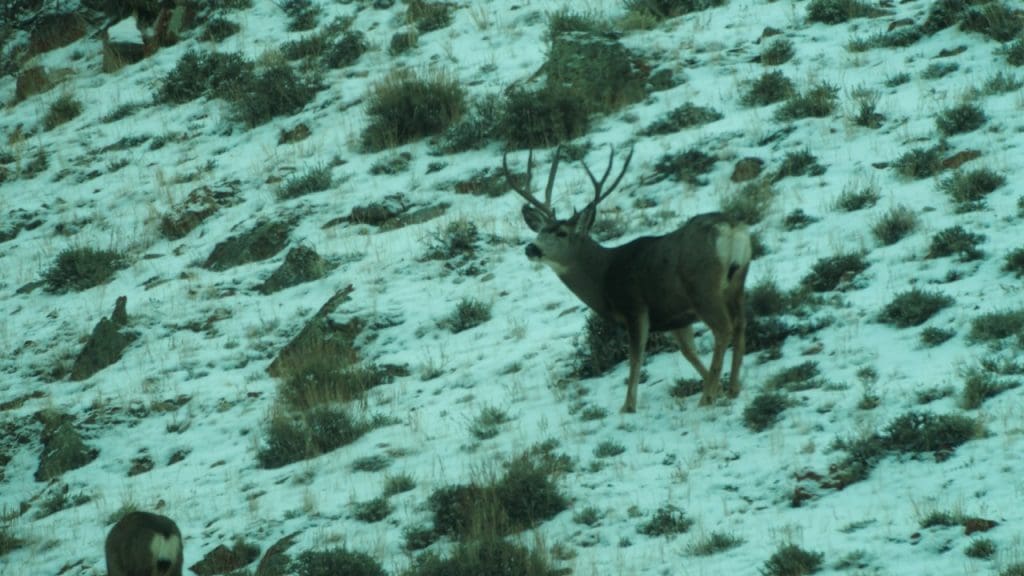
I had been home from the Idaho hunt a week and watching the weather closely in preparation for my upcoming Utah hunt. The high pressure ridge that had dogged me during the Idaho hunt had mostly just strengthened over the last 10 days. This meant virtually no snow in the Intermountain West. Buck hunters from Colorado to Montana had been handed their worst season in years due to the mild conditions, and it wasn’t looking any better for me.
I’d drawn the Utah muzzleloader tag mentioned in Part I back in June. I’d scouted the unit the previous January and spent plenty of time talking with the biologists in the area. This particular deer herd summers above 9,000 feet then migrates to the winter range at around 6,000 feet. This means a big storm or two was needed to push the majority of the deer into the unit. That hadn’t happened and as the hunt drew close, I decided I better arrive early and see if any deer were even showing up.
I loaded the pickup and hit the highway. I wanted to arrive two full days before the season opener and confirm if it was as bad as I was imagining. The high pressure ridge had weakened, allowing a small storm in, but was predicted to rebuild for the foreseeable future.
I arrived, set up camp, then headed out. There was just a skiff of snow from the previous night so I drove the back roads looking for tracks. From my research and earlier scouting trip, I’d gathered that there would be several thousand or more deer arriving in the unit over the course of the hunt. In several hours, I confirmed only five new deer had crossed into the unit that night. Five!
I hit some high points and glassed until dark, then was back out early the next morning. I glassed up nearly a hundred deer scattered about, but hardly any mature bucks. The rut was in full swing so if there were big bucks around in any number, I’d be seeing them. I checked the weather again and there were no big storms in the 7-day forecast. I had to make a decision.
As I wrote in this post The True Value of Scouting, your application strategy should include each state’s point-refund policy. Every state is different–some are stingy, some are generous–Utah is of the generous type. I knew this hunt could be a bust due to weather, and applied knowing that if the migration wasn’t happening, I could turn my tag back for a point refund. With more than 15 years of applying on the line, I’d rather regret turning the tag back than regret keeping it.
The refund policy stated that I had to send the license back before the hunt started, which was in a mere 18 hours. I left the winter range and made a long drive to a small town Post Office. It was a little disheartening to think I was sending back the license I’d waited so long to draw, especially considering that this was the second one I’d returned this year (see what happened in Nevada here).
I learned a long time ago that a big buck hunter has to be smart and flexible. More often than not, things WON’T go you your way. Some guys will criticize me for turning back licenses. Fair enough, but I’d like to see what they do when they finally draw a weather-dependent hunt and the weather makes a no-show. As for me, I’ll just play the patience game.
Not one to waste opportunity, I drove back to the unit and headed out opening morning–without a gun of course– and spent some time scouting, and even better, meeting some hunters. Again, I saw no big bucks. Talking to guys who knew the area better than I did, the hunt wasn’t looking too promising for 2016.
A few weeks later, I was back in the area to scout the last weekend of the hunt. We’d had a few small storms and there was a little more snow. However, in a morning/evening/morning of scouting, I only saw a couple of nice bucks. The best one is shown in the lead photo and the other one here:
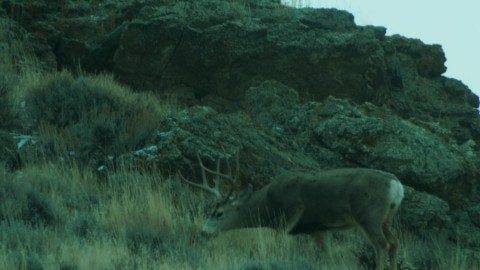
There were a few more deer in the unit, but far from its potential. I’ve found on most migration hunts that the biggest bucks often show up last. The hunt closed with only a fraction of the big deer arriving on the winter range.
As I made the long drive back to Idaho, I was sure glad that I had turned the tag back. Unless another better opportunity presents itself, I’ll likely apply again in 2017. I learned a ton during my two “scouting” trips that will surely improve my chances in the event I hunt the area again.
Thanks for following this series. This is real deer hunting for the DIY hunter. It’s never easy, rarely predictable but is very rewarding when it does comes together. I truly hope you learned something that will help you take the best buck of your life.
Get your final entries in for the Vortex scope and The Huntin’ Fool Membership simply by commenting on any post during the series (more details here)
I’ll be drawing early next week.
If you want to learn more about, Hunting Big Mule Deer check out my book:

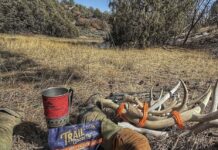
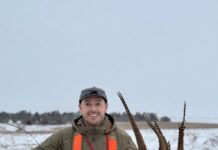
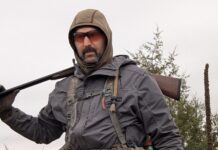



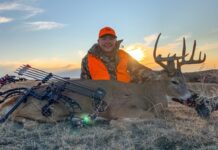






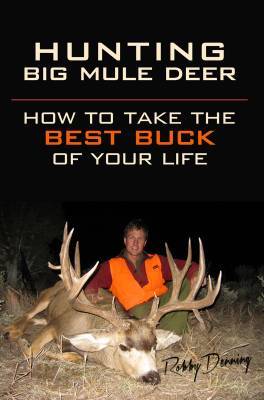
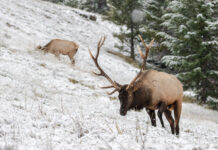
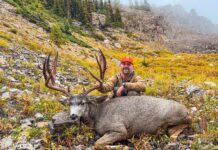
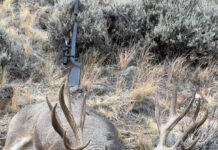



Thanks for another great series Robby, but more importantly, thank you for sharing your mule deer hunting knowledge and feeding my addiction.
Robby, very nice and insightful series! It was definitely a weird fall here in Utah, glad that you didn’t eat 15 points! Thanks for putting this all together.
Thanks for the series, sounded like a rough but well played season for you. Looking forward to some more stories from you in the future!
Was hoping to see a giant Utah Muley, but as you said sometimes it just doesn’t work out. Thanks for your blog. Love reading it!
Hope you draw Utah again next year
Enjoy all the blogs and the importance of patience. Patience is still a virtue I have the most trouble with after about two weeks of season.
Thanks everybody for chiming in. Enjoyed reading the comments and sharing my hunting with you. Hope it’s helpful come hunting season for you.
You won’t regret turning your tag back in once you draw the tag and drop the hammer on a booner! Thanks again for sharing your stories!
I love reading about your hunting adventures. Great story again this year. Can’t wait till next year.
Awesome blog, thanks for doing it for all of us. My question is what do you think is the most fair state’s rules with respect to turning tags back in? I think that the current Colorado rule where you have to turn it in 30 days prior to the hunt and you lose the cost of the tag to keep your points, but you don’t get a new point is extremely fair. Better than Wyoming where you can’t turn it in and better than Utah where in your case the tag is not utilized by a hunter (how Colorado was until last year). I understand completely and have no problem with you turning in the tag, those are the rules!
I spent 11 Utah points for deer a few years back and applied as a group and was not allowed to turn back in my tag as others in my group were able to hunt. I was told it was to keep people from abusing the system where grandma applies every year and helps you get a tag and then turns her tag back in and was the first year that went into effect. That makes sense to me, but in my case all of the applicants had the same number of points so it did not help me at all and was no different than an individual turning in a tag.
This year I spent 13 points on a 4th season Colorado tag and could not find any decent bucks before the season started and because of the lack of weather and the 70 degree weather, if allowed, I would have turned in my tag. Ended up with a 180+ buck when it finally cooled down, so it ended up okay!
Nino, I think Utah and Nevada have the best system in regards to the changing landscape of point systems. We pay hundreds of dollars to accumulate points in these states and they recognize the fact that things happen that can legitimately prevent a hunt from occurring like weather, health crisis, work changes, family issues, and even lack of big deer. They still get to keep the license money and they’re always bawling they don’t have enough money to meet wildlife budgets so it’s a win-win for them. I “donated” nearly $800 in tag refunds this year and never even hunted the units. Likely in Nevada, my tag went to another hunter so they got double the license fee per deer hunted. I have no problem with this as it’s part of the pay to play, but to lose a decade or more of points (like Wyoming would) is not right in the current landscape of high demand.
All western states recognize the value of offering limited quota hunts and growing big bucks so when a state then turns around and says no refunds, it’s outdated thinking. I was disappointed in Colorado’s move to only alllow point refunds 30 days before season. They want all our points, all our money, but won’t recognize that things happen even within 30 days of the hunt that can prevent it. If they think that blocking big buck hunters from turning the tag back (often tags that take 10-15 years to draw) for a better year is unfair to others waiting in line, then there talking out both sides of their mouth. CDOW creates and promotes these trophy units and gladly take our application money, but don’t want to offer refunds within a few days of the season? Ridiculous. If they’re truly worried about about fairness to the other hunters in line, then create a secondary draw list (Nevada does this) and when someone turns a tag back, call that list. Someone, especially locals, will take that tag. Charge $25 return fee and the admin cost is covered too. Even if there was a 48 hour rule, that gives them time to make the calls. The private industry could pull this off, so why can’t we expect our game agencies to do the same. The landscape has changed, demand has greatly exceeded supply, and it’ s just old thinking for states (who created these point systems) to say “too bad” lose your points if you don’t hunt”.
Some states are recognizing this changing environment. Just this year, Arizona implemented a point saver program that, for a fee, allows you to turn a tag back for any reason. That’s the direction all states should move for their high-demand units. I can’t answer on the group refund question as you raise a valid point that it could be abused.
Thanks for the discussion.
Robby,
First I want to say thank you for your blog. I appreciate and enjoy all of your posts.
You have talked a couple of times now about scouting in January before you applied for tags in a new area. I am interested in learning more about what you are looking for during a January scouting trip. Is this the best time to scout a new area, or is it largely dependent on the unit you intend to hunt?
Hi Travis, it’s largely dependent on the unit you hunt and when the hunt will occur. Some units, the deer hit the winter range in November and that can be the best time, especially if your intended hunt will be in November. Other places, the arrival of the deer is heavily weather dependent and you need to wait for enough snow to push them in.
I’m looking for several things when I scout
1) the quality of bucks. This helps me decide if I want to apply and it helps me to know what size bucks I should pass on. Too many of us have dreams of huge 200″+ muleys strolling around during our hunts but if you never see one or very few on the winter range, you’re foolish to hold out for one come hunting season.
2) If the hunt I’m applying for will occur on the winter range (very few do) then I’m also learning the logistics of what it will take to hunt the area and where I’m likely to find the bucks. Hunters often make the mistake of thinking too big when it comes to drawing the tags. I wrote about this here: http://www.rokslide.com/thinking-too-big and in my book
The main thing is that every place is different and you should try to time your winter scouting when it makes the most sense for that particular deer herd.
Robby,
Thank you for sharing your hunts. I learn something from every post. Hope you draw your hunts in 2017.
Phil
Comments are closed.